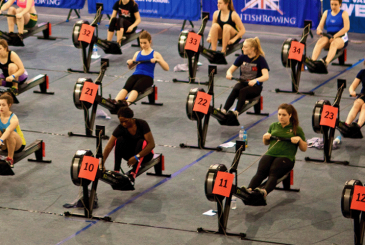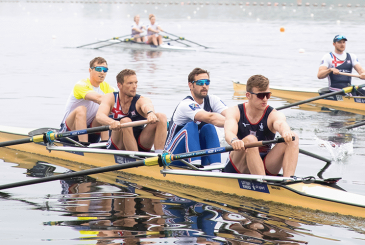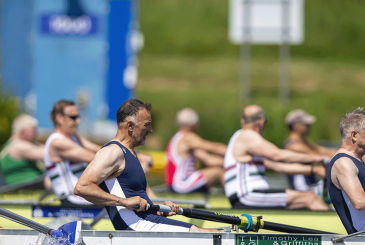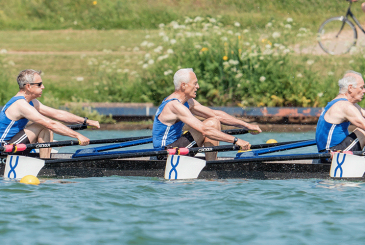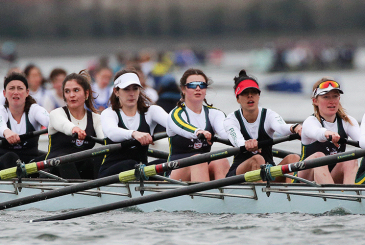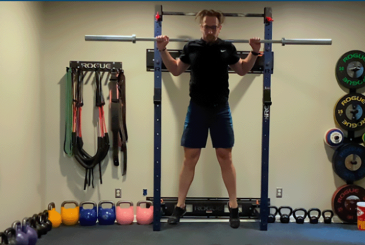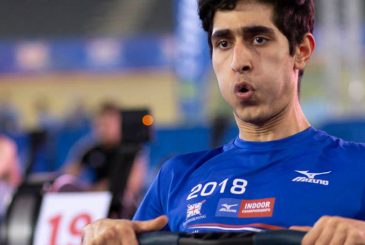Exercise physiologist Mark Homer explains why cooling down after rowing needs positive action, and how to do it efficiently so you can get on with having a cuppa in the clubhouse or heading home for tea.
In my article warm-ups for rowing, I highlighted how we all do them, always have done, but often don’t appreciate why we should. Cooling down, warming down, active recovery, or ‘flushing out’ the legs probably fall into the same category. So what is the value in graduating our return to rest over abruptly stopping and being in the cafe (or pub) within 5 minutes – with sweat still dripping down our backs?
Why cool down?
To understand why it is useful to include a cool down after your training or race, we need to understand what happens to the body during exercise, and more importantly intense exercise.
During a tough session, your body’s balanced state of rest is disturbed, so it responds to meet the demands placed upon it. You breathe deeper and more frequently to get more oxygen rich air into the system, your heart rate increases and beats with more force per beat in order to force blood on more laps of the body. Your blood vessels dilate to increase blood flow to where it is needed (the muscles and lungs) and contract to reduce delivery to less vital destinations (e.g. the stomach). And in your muscles, glucose and fat are broken down at an increased rate to produce the body’s preferred energy source for contractions.
All of these responses are triggered by a complex network of sensors and chemical messengers that constantly monitor the internal environment and tweak it to keep us moving at the desired output. When these systems start to reach their maximum operating limits, run out of fuel, or are overrun by the build up of waste products, you are forced to slow down or stop.
Including a gradual cool down allows these systems to return to resting levels by maintaining blood flow and allowing unwanted circulating metabolites to be cleared through exhalation as the blood travels past the lungs – in a similar way to how we transport oxygen into the system.
Lactic acid and blood lactate
“So, Mark, we cool down to clear lactic acid then?” some might ask. Unfortunately, this is a myth that persists and is re-established by commentators discussing endurance athletes struggling to maintain speed or power as the finish line approaches. Blood lactate (a slightly different compound to lactic acid but the one that accumulates in our blood with intense exercise) is not the cause of fatigue, and therefore not something we need to worry about clearing post-exercise.
Lactate is actually a useful fuel sources that can be converted to glucose for energy production, but accumulates during high intensity work. It is fairly easy (for an exercise physiologist) to analyse, and acts as a useful proxy for some potential fatigue causing substances that are harder to monitor. It has therefore developed a bad reputation by association – please feel free to explain this to your friends the next time you hear a TV pundit make the mistake (they will be impressed by your scientific knowledge, I promise).
When is a cool down required?
The value of some active recovery is dependent on the session that precedes it. A long-steady paddle will not disturb the body’s ‘homeostasis’ (the self-regulating process by which biological systems maintain stability while adjusting to changing external conditions) enough to require an extensive cool-down. However, intense sessions with repeated efforts and minimal recovery between repetitions will cause accumulation of the fatiguing metabolites that would benefit form some help to dissipate at the end of the session. This is even more important after racing – maximal effort, often to exhaustion, brings with it the need to reduce accumulated waste products in the system – particularly if you need to perform again soon.
What should a cool down include?
Effective cool downs balance the need to return your body to its resting state with other factors that can improve recovery. For example, spending 45 minutes on the spin bike when you only have two hours between races is not optimal. Remember that refuelling, debriefing and preparing for the next race are also important.
In my experience, there is anecdotal evidence that an effective cool down should be multi-modal, including different forms of exercise such as walking, cycling and even swimming (if possible) rather than just slower rowing than you did during the session. The benefits of this include the opportunity to refuel, where timing is important, and a chance to discuss the session with a coach or fellow athletes.
In a racing situation, you can also consider additional cool-down strategies that can potentially speed the recovery process. Check out this article on recovery for some more detail.
Once you are happy you have been down through the gears (a heart rate of below 100 is a good rule of thumb for stopping, or no more than 30 minutes) then you have an opportunity to work on your flexibility and range of movement. After a session the muscles are warm and the risk of injury reduced, so take this chance to stretch off and put yourself in a better position for you next session or race.
Staying warm while cooling down
While cooling down is an important component of a training session or race, there are risks involved with allowing the body to get cold. Fatigue, sweaty/damp kit and low-intensity exercise can combine to reduce your body temperature below the normal range in chilly conditions. So make sure you have extra, dry kit with you to put on in the boat after your last piece. Put these extra layers on before you start feeling cold, particularly in the winter months.
Individual differences
Like warming up, cooling down is different for every athlete. This can be due to age, sex, training history or innate physiological differences. Certainly, as we age, the need to cool-down effectively is increased – particularly in terms of maintaining range of motion and flexibility. The weather conditions can also play a part – in extreme heat, it can be counter productive to conduct a lengthy cool-down when your main aim should be to reduce core body temperature, so seeking shade and water to drink is likely more use than 20 minutes on the ergo. In the cold, the risks of body temperature dropping (exacerbated by sweaty kit) should be avoided, so seek the warmth of the gym and finish off indoors.
In summary, a cool down will help better prepare you for subsequent races and training by reducing the time it takes for your body to return to a resting state. Accelerating the clearance of waste products means your body can concentrate on adaptation rather than recovery – making you better for the next session or race. And always remember – lactate isn’t the bad guy here!
Photo: Janet Vickers




